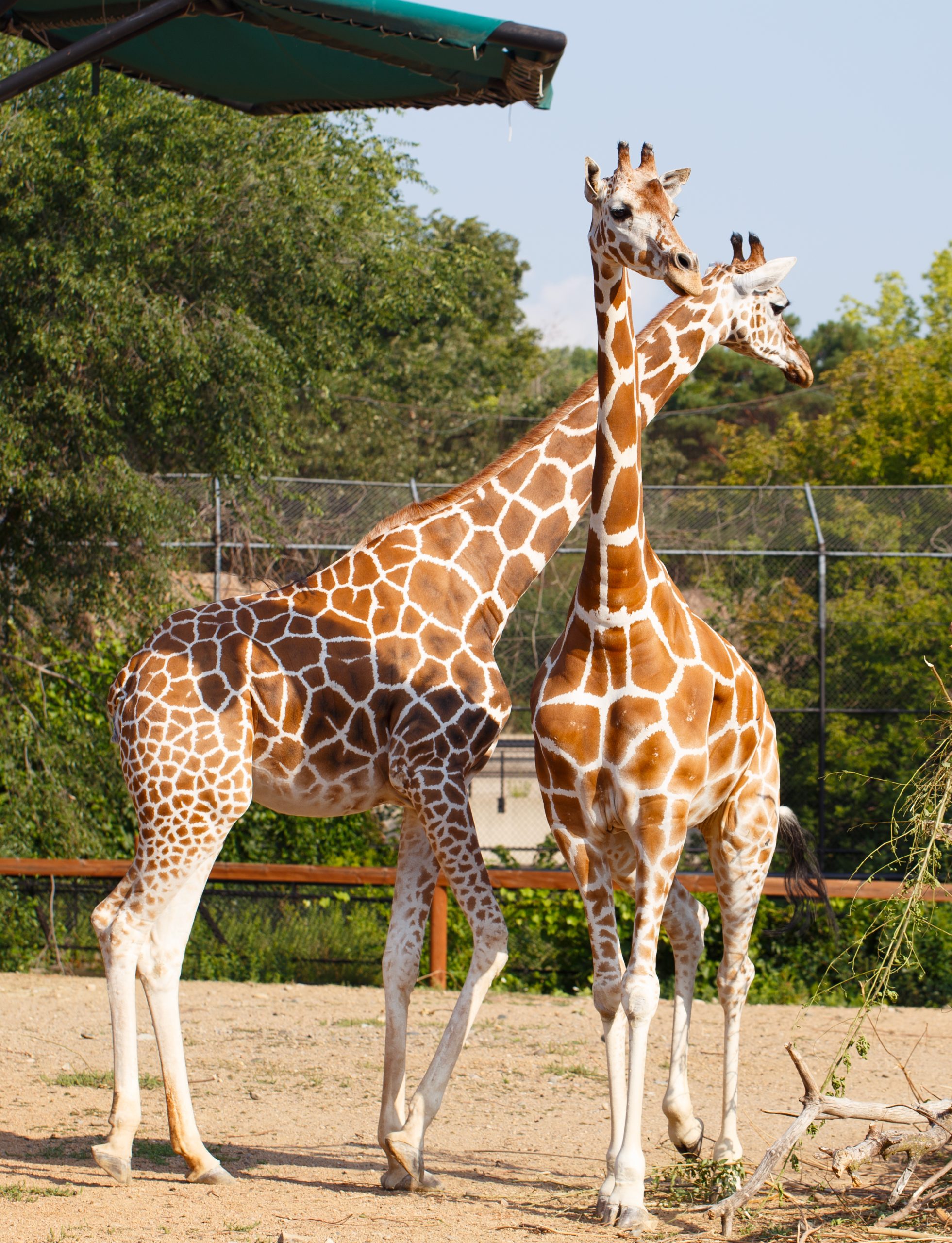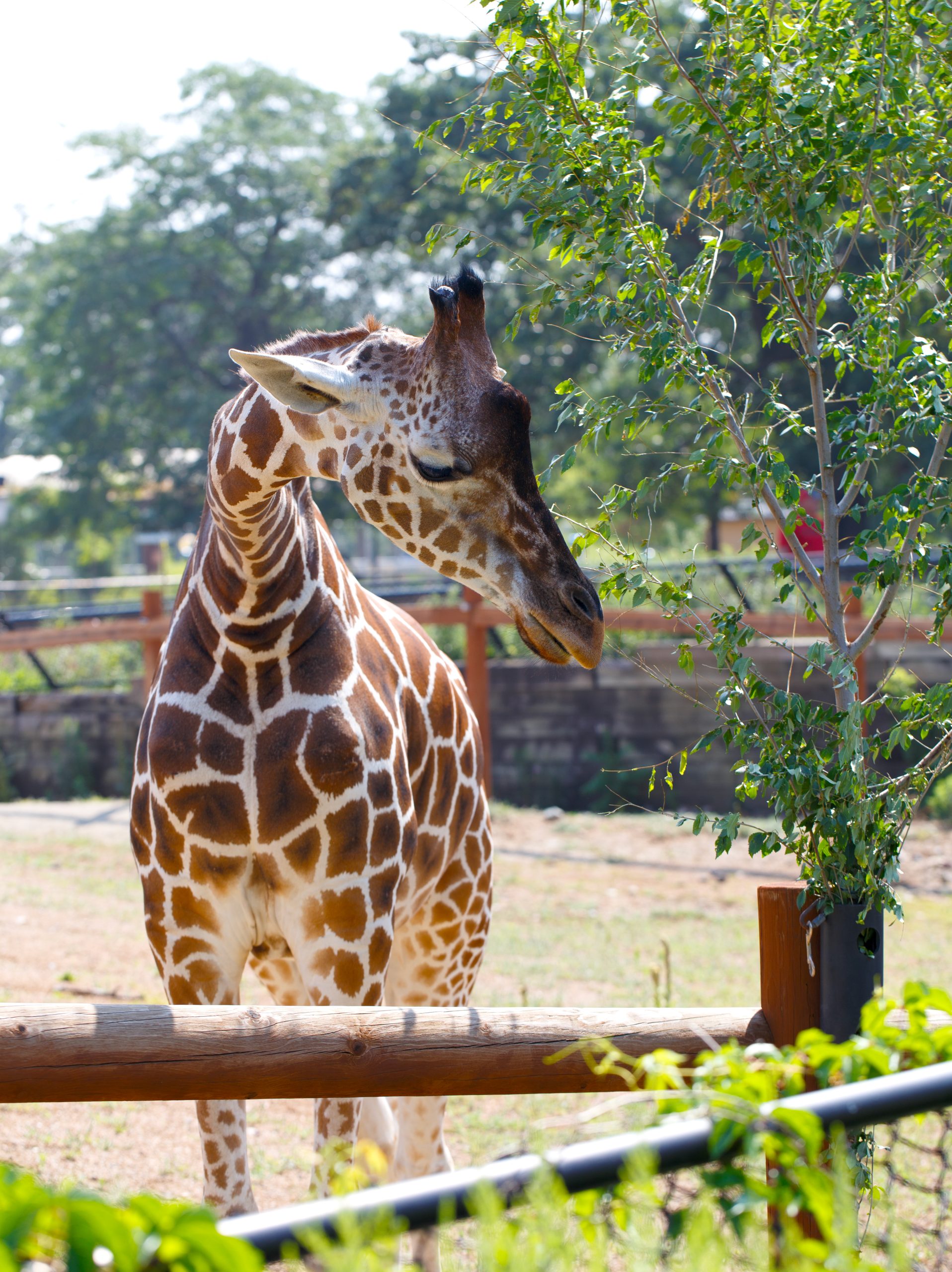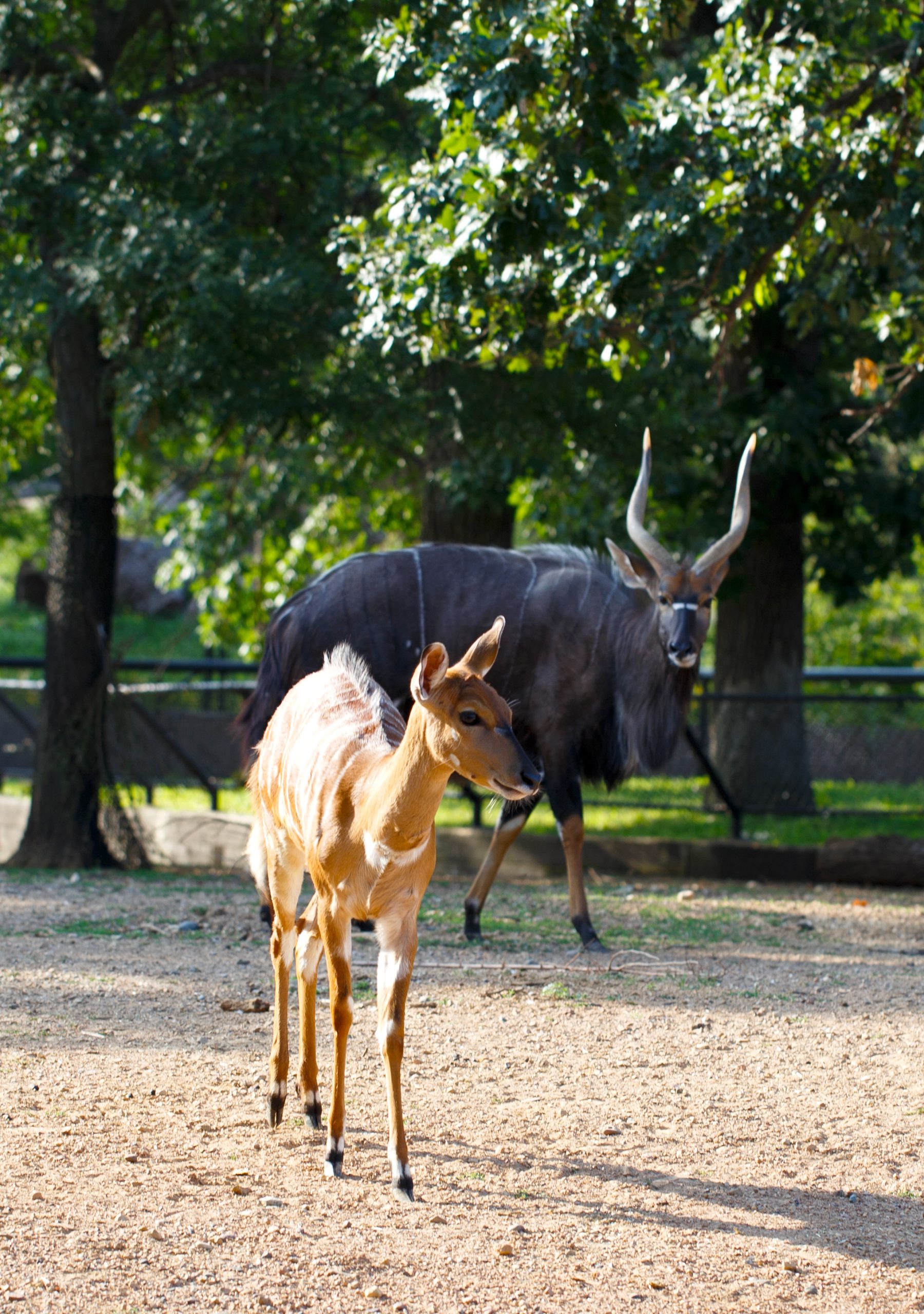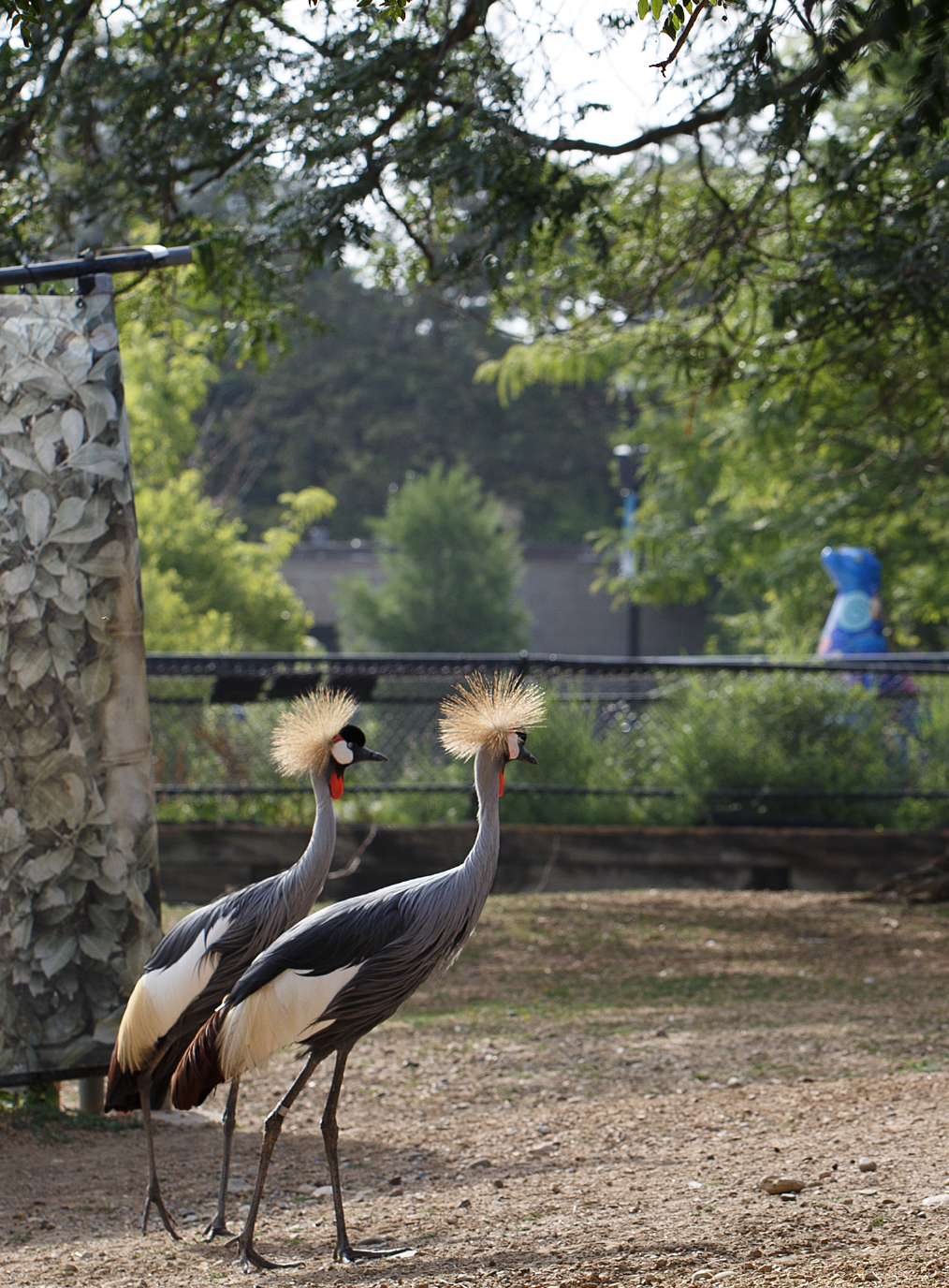It’s been a busy season of new arrivals at Como Zoo

Stanley, Houdini, Mutambi, Stevie….there are a lot of new names to match to new faces at Como Zoo. Here’s a sneak peek of the new animals you should be sure to meet on your next visit.
-

Zinnia
Species: Reticulated GiraffeSeven-year-old Zinnia arrived at Como Zoo this spring to be a companion to Clover, who lost her long-time friend, 23-year-old Daisy, earlier this year. Zinnia is easy to recognize, says senior keeper Jill Erzar, because of her “beautiful dark face and the cute freckles on her bum.” Though she’s got a laid-back vibe, keepers say she’s very food-oriented and is increasingly curious about the giraffe feeding station. So far, Zinnia and Skeeter, the habitat’s resident male giraffe, are giving each other lots of space. “Skeeter seems to be terrified of her,” Erzar says. “We have no idea what that’s about.”
-

Stanley and Stevie
Species: NyalaThese spiral-horned antelopes native to southern Africa are known for their eye-catching coats and their gregarious nature. “The nyala are very calm, interactive and engaging,” says Erzar. “They don’t mind crowds either—they’re incredibly chill.” Brought to Como Zoo this spring as part of a species survival plan, the two young nyala may become a breeding pair if the chemistry is right. “We haven’t seen any behavior like that so far, but nyala males have a unique breeding display. The mane along their spine stands completely upright when they’re trying to attract a mate, so that’s something we’ll be looking out for in Stanley.”
-

Ziggy and Sago
Species: Hoffmann’s Two-Toed SlothsThe milk crates you see strung up in the former lemur habitat have become a favorite hang-out spot for Ziggy, a 2-year-old male sloth who’s just moved in with his partner Sago, a 5-year-old female. The couple could become a breeding pair in the future, though, as zookeeper Mike Marazzi explains, the courtship process can be very slow. “Sloths are very private about things, so any breeding that takes place is usually going to happen overnight, and when they do have a baby, it could be a bit of a surprise to us since female sloths don’t always show their pregnancies with a visible weight gain,” he explains. Though they’re living in the primate building this summer, sloths are not related to their neighbors the orangutans and spider monkeys. Instead, they belong to the superorder Xenarthra, and share a family tree with anteaters and armadillos.
Photo taken by Zookeeper Michelle Hays.
-

Houdini and Mutambi
Species: African Gray crowned craneHoudini, 13, and Mutambi, 5, are part of a species survival plan breeding recommendation for the gray crowned crane, the national bird of Uganda. But so far, Houdini is only doing his courtship dance for his keepers. “Houdini hasn’t quite figured out that his girlfriend is awesome,” Erzar says. You might notice the cranes stamping their feet—a behavior that helps flush insects and other prey out of the grass.
To learn more about the new faces at Como Zoo, check out the Fall edition of the Como Friends Insider. Delivered free to Como Friends’ members, this quarterly newsletter features behind-the-scenes stories about the people, plants and animals that make Como Park Zoo & Conservatory Minnesota’s most visited cultural destination. Become a member today!